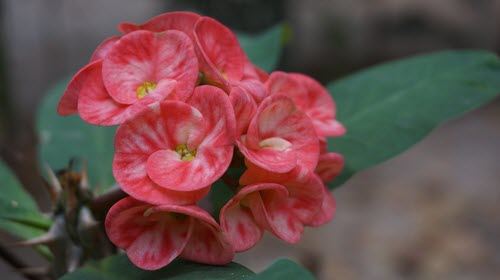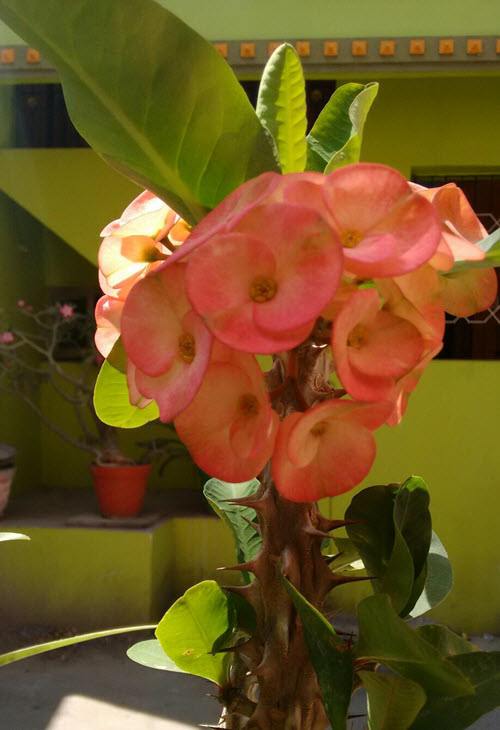Do you believe in good luck plants? Well, here’s a gorgeous, but thorny beauty you can add to your garden to bring in some of that good fortune. The Crown of Thorns isn’t just a good luck magnet, its gorgeous flowers adds a touch of glamour to your surroundings as well.
The Crown of Thorns plant, (Euphorbia milli ) commonly known as the Feng Shui plant in some parts of Asia. It is a rare succulent that blooms almost all-year-round. Its called the Crown of Thorns for the fact that it has big sharp thorns all over its leggy stem. Wikipedia suggests that legends associate the plant with the crown of thorns worn by Christ.
But don’t let that put you off as the plant is full of lush green leaves and is said to be very auspicious and bring lots of good luck so those who have them in their garden.

The Crown of Thorns is an easy to grow cactus that requires very little care. The plant has long green leaves and bright colorful flowers that grow as bunches on the stems. You can find them in red, pink, yellow and white hues and they can stay fresh on the plant for weeks on end.
Also Read: Low Maintenance Plants for Your Terrace Garden
The plant requires plenty of sunlight to bloom regularly and can be pruned to prevent them from growing straight up. New branches will grow from the pruned areas making the plant grow bushy and full. The plant is drought tolerant and loves slightly dry, sandy soil. Being a succulent, it stores water in its thick stems, pretty much like a cactus does, so it can be watered less frequently than your normal house plants.
Here’s one growing in my garden. WATCH OUT FOR THE THORNS!

Crown of Thorns Plant Care
The plant has big sharp thorns so you must place them in an area where your kids or pets are not likely to hand around. Also wear gloves when you are handling the plant.
If you find the plant not blooming, make sure you place it in an area where it gets full sunlight, at least 4 hours of direct sunlight every day.
Avoid too much watering as the leaves will turn yellow and start falling off. Also avoid pouring water on the leaves as they will rot if too wet.
Be wary of the white milky sap that may ooze from the plant. It is toxic and can irritate your skin, eyes and mouth.
You can feed the plant with a liquid fertilizer diluted in water every 2 weeks in summer and every week in winter.
If you want to propagate the plant, take stem cuttings about 8 cm or 3 inches. Dip the cut ends in warm water for a few minutes. This will stop the flow of the milky sap. Allow the stem to dry for 24 hours. Then insert it into a slightly moist potting mix. Cuttings should root in about 6 weeks time. You can drizzle water on the soil once every week to keep it slightly moist but not wet.
Leave a Reply